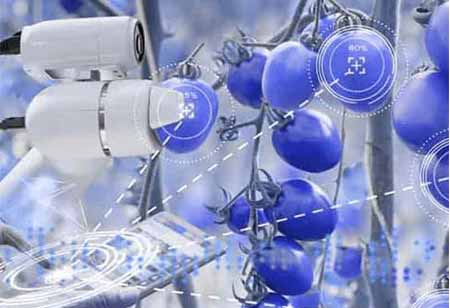Thank you for Subscribing to Agri Business Review Weekly Brief
Use of Robotics in the Agribusiness Industry
External shocks that have affected all over the past two years, from farmers to food companies and so on to fertiliser manufacturers

By
Agri Business Review | Tuesday, September 20, 2022
Stay ahead of the industry with exclusive feature stories on the top companies, expert insights and the latest news delivered straight to your inbox. Subscribe today.
From robotics to waste reduction and sustainability, Investment Monitor identifies trends that could shape the agribusiness industry in 2022.
FREMONT, CA: External shocks that have affected all over the past two years, from farmers to food companies and so on to fertiliser manufacturers as a crucial link in the agri-food value chain, have included the COVID-19 pandemic, an increase in the frequency of extreme weather events due to climate change, and the ongoing conflict in Ukraine. These shocks have highlighted some of the food system's flaws and increased the need for change.
Robotics, the internet of things (IoT), waste reduction and sustainability, nutritious plant-based food alternatives, and low-alcohol drinks are some of the areas projected to witness growth over the next following years. Although images of bare grocery shelves in the UK made headlines worldwide, problems with the global food supply chain have been frequent since the pandemic exposed people's fragility.
The labour shortage, made worse by the pandemic, has been one of the main reasons for this issue with food supply chains. As a result, robotics's function in agricultural supply chains has gained prominence and should be watched as a prospective trend in agriculture in the upcoming years.
According to a MarketsandMarkets study, the size of the global agricultural robotics market is anticipated to increase from USD 11.9 billion by 2026, at a compound yearly growth rate (CAGR) of 19.3 per cent. Raw materials such as pesticides, herbicides, and fertilisers can be reduced by using agricultural robots, which can improve the sustainability of agriculture. The FAO of the UN estimates that 90 per cent of farmers globally work on a small scale; therefore, it appears unlikely that this technology will soon be available to this significant group. IoT technology promises to make agriculture and its supply chains more efficient and, consequently, more sustainable.
The global agriculture IoT market is anticipated to reach USD 32.7 billion in value by 2027, growing at a CAGR of 15.2 per cent, according to a market research analysis released by Meticulous Research. The potential applications of IoT in agriculture are vast, ranging from using drones to inspect or spray crops to using intelligent greenhouses and sensors to maximise harvests while consuming the fewest resources possible. Drinks with low or no alcohol content have grown in popularity recently, with hard seltzers becoming more common on supermarket shelves in the US and Europe.
The market share of low- and no-alcohol beverages rose to three per cent in 2020, and by 2024, the total volume is expected to climb by 31 per cent. Although alcoholic beverages are anticipated to go out of style anytime soon, one probable development in agriculture for 2022 is the market share of healthy, low-alcohol, and non-alcoholic beverages.





